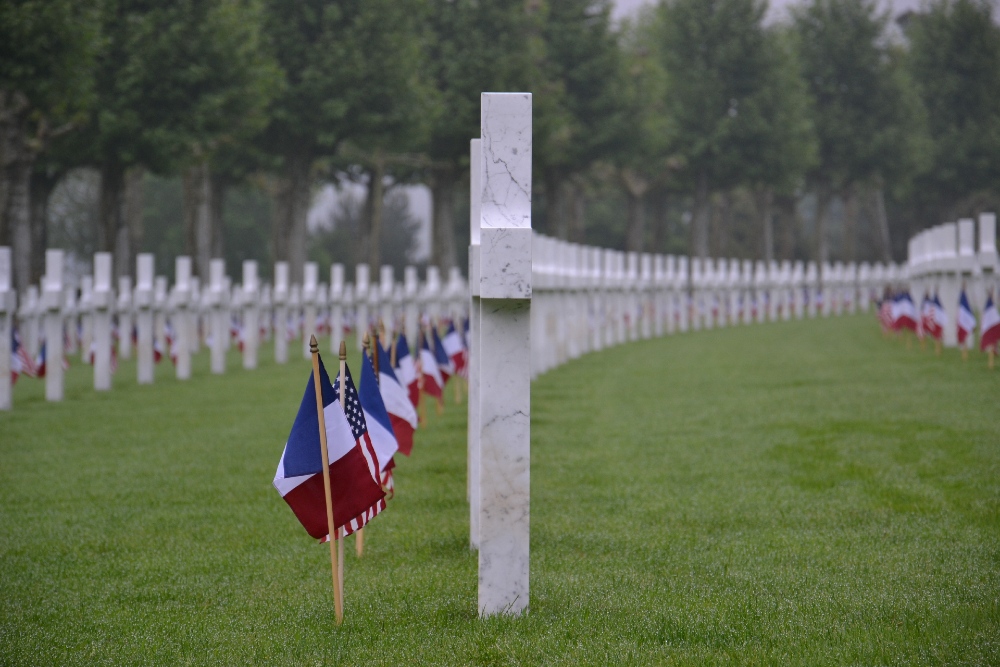The 150 students from the elementary school in Charly-sur-Marne have just left, and the Aisne-Marne American Cemetery falls silent once again. This military cemetery covers 42 acres of green space halfway between Paris and Reims, and welcomes almost 2,000 visitors per month between May and November, most of whom are school groups and the occasional passing tourist. The numbers drop after November 11. “Military cemeteries and family vacations don’t exactly go together,” says Shane Williams, the American superintendent. “It’s a shame. There are nine beautiful American cemeteries between Paris and Strasbourg alone!”
Following the end of World War I, the United States were granted plots of land by the Allies to bury their fallen. Eight cemeteries were created in France, one in Belgium, and one in England. These sites of remembrance are the perpetual property of the U.S. government and are exempted from paying taxes. Responsibility for their care and maintenance has been placed in the hands of the American Battle Monuments Commission (ABMC), a government agency founded in 1923 that now manages 26 cemeteries and 35 monuments created after a variety of wars across four continents. The sites are home to a total of 139,855 graves, more than 40% of which are on French soil.
“We are a Franco-centric agency,” says John Wessels, who manages the European operations of ABMC. The Commission’s headquarters are in Arlington, Virginia, but its European offices are in Garches, west of Paris. A major part of its annual budget is allocated to maintaining the 12 cemeteries and 16 monuments commemorating the two World Wars in France, and 255 people are employed by ABMC in France – and paid in dollars – including 30 Americans.
3,349 Soldiers in his Charge
Shane Williams is an U.S. Air Force veteran originally from Washington State, and joined the ABMC in 2009. He first worked at the Normandy American Cemetery, then at the Epinal American Cemetery in the Vosges, before arriving in Aisne in 2015. Today he supervises the Aisne-Marne American Cemetery and two nearby monuments – the Château-Thierry Monument and another commemorating the valor of the U.S. Marines.
The American veteran honors the promise made to families by the French government almost a century ago. Shane Williams manages a team of 13 French employees – the majority of whom are “green-collar” workers, horticulturalists and gardeners – and helps maintain the white marble headstones, the flowerbeds, the lawns, and the thickets. He raises the two U.S. flags at 9 am and lowers them at 5 pm. He also receives visitors, presides commemorative ceremonies alongside French officials, and preserves the memory of the 3,349 soldiers in his charge.

Most of the U.S. soldiers buried at the Aisne-Marne American Cemetery were killed in action during July and August 1918, fighting in the Champagne and Marne regions. Many of them were in their twenties, according to Shane Williams. Whether from New York State, Pennsylvania, Massachusetts, Illinois, Ohio, Michigan, or Wisconsin, most of them had never left the United States before joining the military.
“Equal in Death”
When accompanying groups of French high-school students or American veterans, the superintendent and history enthusiast likes to take them to the graves of brigadier general James McIndoe and private Willie Wise. The first was a white officer from Maryland who graduated from West Point and received the French Légion d’Honneur. The second was an African-American private from South Carolina, recruited into a segregated regiment. The two soldiers survived the war, only to die of Spanish flu in the first months of 1919, and are now buried just a few feet away from each other.
“Our military cemeteries do not have sections reserved for officers, African-Americans, women or Jews,” says Shane Williams. “These soldiers came to fight in France for a variety of different reasons, but they all are equal in death.”












